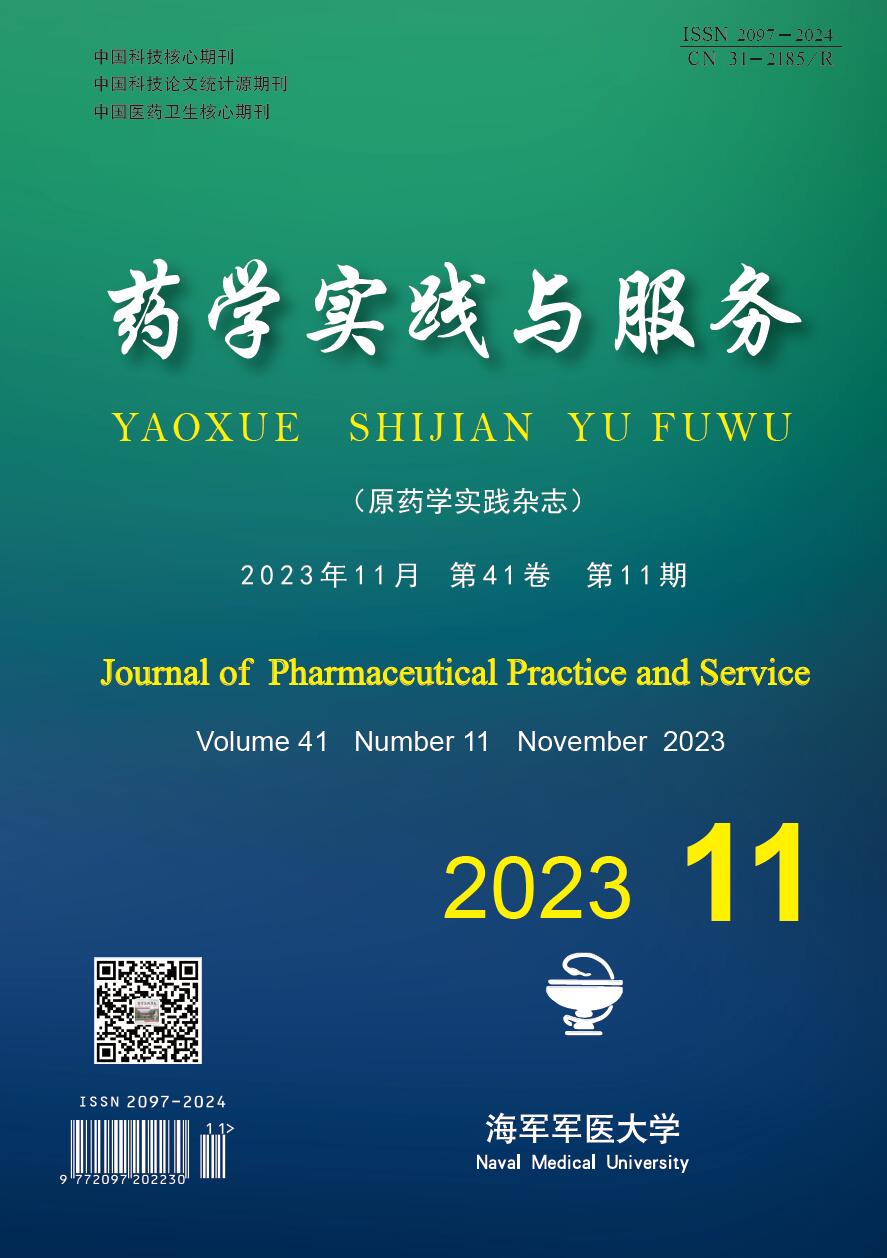-
黑色素瘤由遗传和环境等因素诱导的表皮黑色素细胞恶变引起,是最具侵袭性的皮肤恶性肿瘤[1]。近年来黑色素瘤成为发病率增长最快的恶性肿瘤,发病率的年增长高达3%~5%。我国黑色素瘤年发病率虽然明显低于西方国家,但仍呈现较快的增长势头[2-3]。早期黑色素瘤治疗方式以手术为主,而对于我国黑色素瘤患者而言,由于早期诊断不足、亚型的分布异于西方国家,需要系统治疗的患者群体比例较高。晚期或转移性黑色素瘤的治疗策略包括:化学疗法、放射疗法、靶向疗法和免疫疗法。化疗与放疗因其非特异性和治疗抗性,在晚期黑色素瘤治疗中的意义有限。根据特定突变基因的靶向疗法应用广泛,但易产生耐药性,在治疗的数月内即导致复发[4]。晚期黑色素瘤的发病率较高,在美国癌症新发病例中排名第五。仅在2022年,美国有99 780例新发黑色素瘤病例,其中死亡病例7 650例[5]。由于黑色素瘤较高的发病率以及晚期黑色素瘤的治疗抗性,因此寻找新型有效的晚期黑色素瘤治疗方法成为了目前黑色素瘤治疗学的研究重点。
黑色素瘤是典型的高突变负荷肿瘤,具有高免疫原性特征[6],对免疫疗法较为敏感。在众多免疫疗法中,治疗性疫苗目的在于诱导针对肿瘤表达抗原的免疫识别,可以有效抑制黑色素瘤的转移与复发,并且毒性较低,这种优势是其他疗法所不具备的[7]。随着对肿瘤抗原呈递和免疫反应生物学的理解,研究者开始关注于针对特异抗原的疫苗设计优化。
由于树突状细胞(DC)可产生激活T细胞的全部信号,在肿瘤免疫反应的启动、编程和调节中起着关键作用,因此肿瘤治疗性DC疫苗成为了黑色素瘤治疗性疫苗的研究热点。本文将肿瘤治疗性DC疫苗在黑色素瘤中的研究及应用现状进行归纳整理,并对其局限性以及可能的改进策略进行探讨。
-
肿瘤治疗性疫苗通过让免疫细胞识别肿瘤特异性抗原,调动人体的免疫系统来打击肿瘤细胞,在免疫机制上它跟传统的预防性疫苗有相似之处,是一种针对肿瘤的免疫疗法。目前共有4种类型的疫苗用于治疗黑色素瘤,其中包括基于肿瘤细胞的疫苗、基于肽的疫苗和基于基因的疫苗以及基于DC的疫苗[8- 9]。
DC作为主要的抗原递呈细胞是近年来肿瘤疫苗的研究热点[10]。由于DC是促进T细胞免疫效应的关键一环[11],在针对肿瘤的免疫反应中,DC采用多种机制摄取肿瘤相关抗原(TAA),通过在淋巴组织中迁移,并调节促炎因子及趋化因子的生成,最终调控T细胞的归巢,引发适应性免疫[12]。肿瘤抗原和DC作为基于DC的治疗性肿瘤疫苗发挥作用的主要成分,在组成疫苗时有两种形式,一种是提取患者体内原代DC,在体外携载抗原后,作为疫苗回输体内。这类负载抗原的疫苗比仅由抗原和佐剂组成的疫苗诱导更强的免疫反应[10]。另外一种是通过诱导 DC 在体内摄取肿瘤抗原[13],由此增强黑色素瘤转移患者的CD8+ T细胞和CD4+ T细胞反应[14]。因此,肿瘤抗原和DC是治疗性肿瘤疫苗发挥作用过程中必不可少的元素。
-
肿瘤表面的MHC抗原引发T细胞的活化与增殖,从而启动针对肿瘤细胞的免疫反应。MHC I类抗原呈递通常激活CD8+ T细胞,而MHC II类抗原呈递激活CD4+ T细胞[14]。通过疫苗诱导的免疫反应使肿瘤得到缓解并形成针对肿瘤的长期免疫记忆,抑制复发以达到产生最佳免疫效应[12]。疫苗佐剂通常会刺激抗原呈递细胞(antigen-presenting cell, APC)上的模式识别受体 (pattern recognition receptor, PRR)。这些PRR可识别病原体相关分子模式(pathogen-associated molecular pattern, PAMP)或损伤相关分子模式(damage-associated molecular pattern, DAMP)等激活APC,增加抗原传递,从而激活NK、T细胞等免疫效应细胞。疫苗佐剂与肿瘤相关抗原共同作用可改善特异性免疫反应,从而增强抗肿瘤疗效[15- 16]。
-
DC是最重要的APC[17],包括多种不同功能的亚型。常规DC(cDC)负责呈递抗原,是肿瘤疫苗发挥作用的重要环节。cDC促进肿瘤部位的CD4+ T细胞和 CD8+ T 细胞迁移到淋巴系统并建立免疫记忆[18]。未成熟cDC最初停留在淋巴组织之外,可通过Toll样受体 (TLR)信号,响应来自肿瘤细胞的DAMP成为成熟cDC[19]。成熟cDC专门从事抗原摄取以及向幼稚T细胞的呈递抗原,参与形成第一信号(MHC-抗原肽-TCR复合物)以及第二信号(APCs膜上的共刺激因子),以激活肿瘤特异性T细胞[20]。不同亚型cDC细胞激活的T细胞不同, cDC1是主要的cDC亚型[21],通常将内源性抗原捕获并加工成抗原肽/MHC I分子以激活CD8+ T细胞,在迁移到淋巴结后cDC1将产生重要的抗肿瘤细胞因子IL-12;cDC2主要负责将外源性抗原肽捕获并加工成抗原肽/MHC II 分子以激活CD4+ T细胞,并分泌IL-10、IL-12、IL-23和TNF-β[22]等细胞因子。
-
目前基于DC的治疗性肿瘤疫苗构建策略主要有:①常规的肿瘤治疗性疫苗;②靶向体内DC的肿瘤治疗性疫苗; ③体外DC过继的肿瘤治疗性疫苗。
常规的肿瘤治疗性疫苗涉及蛋白质或长肽形式的抗原加上有助于 DC 成熟的佐剂,如粒细胞-巨噬细胞集落刺激因子(GM-CSF)[23],但这种方法缺乏靶向性,需使用对DC具有高亲和力的重组载体或有利于靶向DC的新型佐剂来增强靶向性。
靶向体内DC的策略包括向宿主注射与抗原结合的抗DC抗体(如抗C型凝集素)并递送适当的成熟刺激物。这种方法会触发并增强免疫,但是由于某些患者的DC及其受体可能会发生改变,因此易导致免疫耐受[24]。
体外DC过继的肿瘤治疗性疫苗首先分离患者外周血单核细胞或者骨髓中的CD34+前体细胞,体外诱导分化为未成熟DC,然后加载肿瘤抗原并经促炎细胞因子活化,最后注射回宿主体内激活抗肿瘤特异性免疫[25-26]。
黑色素瘤治疗性DC疫苗已开展了多项临床试验(表1)。与辐照灭活的肿瘤细胞疫苗相比,治疗性DC疫苗在黑色素瘤患者中具有更好的预后[27];经过基因修饰而分泌GM-CSF的DC疫苗在预防黑色素瘤肺转移方面也优于常规的肿瘤细胞疫苗[28]。
DC疫苗方案 临床试验编号 临床试验阶段 开始日期 临床试验结果 DC-疫苗 NCT01042366 Ⅱ期 2002年 因进展缓慢而终止,不良反应发生率较高 自体肿瘤细胞的抗原DC疫苗 NCI-V01-1646 Ⅱ期 2003年 治疗耐受性良好,在54例患者的临床试验中,30例患者5年生存率高达54% DC-疫苗 NCT00125749 Ⅰ期 2005年 中位生存率提高 自体肿瘤细胞的抗原DC疫苗 NCT00436930 Ⅱ期 2007年 与肿瘤细胞疫苗相比,DC疫苗组的生存率较优,中位生存时间15.9个月,2年生存率为72% 自体肿瘤细胞的抗原DC疫苗 NCT00948480 Ⅱ期 2009年 注射疫苗的患者中位生存期延长22.9个月,死亡风险降低70% 基于pDC的疫苗 NCT01690377 Ⅰ期 2012年 14例患者中有4例获得长期无进展生存(12 ~ 35个月),且其中3例与T细胞应答增强有关 免疫检查点抑制剂和基于DC的
疫苗NCT02678741 Ⅰ/Ⅱ期 2016 年 与免疫检查点抑制剂联合应用导致疫苗有效性
增强含有肽的天然髓系 DC 疫苗 NCT02993315 Ⅲ期 2016年 在进行中 派姆单抗、环磷酰胺和DC疫苗 NCT03092453 Ⅰ期 2017年 在进行中 自体全肿瘤细胞裂解物诱导的自体 DC 联合化疗药物环磷酰胺
NCT03671720Ⅰ期 2018年 在进行中 -
黑色素瘤的治疗性疫苗的应用已显示出良好前景,但该类疫苗效力的进一步提高仍面临着瓶颈,部分临床试验中产生的令人失望的结果可能是由于DC不成熟所致。未成熟DC无法进行有效迁移,而且MHC II和共刺激分子的表达也会随之减少,导致DC无法有效刺激 T 细胞,最终降低疫苗疗效。因此,诱导DC成熟及迁移成为了改进肿瘤治疗性DC疫苗效力的主要策略。
刺激DC成熟的一种方法是使用CD40抗体。CD40是DC上的一种共刺激受体,可促进DC成熟和CD8+ T细胞激活。此外,Toll样受体激动剂可以刺激DC的模式识别受体以促进抗原加工后呈递给T细胞。黑色素瘤疫苗佐剂中常用的TLR3激动剂聚肌苷-聚胞苷酸(poly-I∶C),这种TLR3激动剂诱导DC成熟以产生具有更强细胞毒作用的CD8+ T和NK细胞[15]。将CD40抗体添加到TLR3激动剂与新抗原组合的疫苗中可促进新抗原特异性T细胞在肿瘤微环境中的增殖,该策略仍需要在人体中进行评估[29]。疫苗与PGE2联用可提高DC活力及迁移能力。另一方面,PGE2会抑制DC分泌IL-12,在缺乏IL-12的情况下会诱导FoxP3+调节性T细胞(Tregs)产生,形成免疫抑制的肿瘤微环境[30],该策略不利于疫苗后续的免疫效应。虽然通过淋巴细胞成熟的DC的迁移能力不如通过PGE2刺激的DC[30],但这一方法可避免免疫抑制作用,用针对CD3/CD28的抗体刺激的自体淋巴细胞数量,可以增加IFN-γ和TNF-α的产生,进一步刺激DC表达CD80、CD83和CCR7,有助于DC的成熟及迁移。
-
免疫治疗中另一个不容忽视的问题是肿瘤免疫抑制微环境。CpG是一种富含胞嘧啶和鸟嘌呤的寡脱氧核苷酸片段,为TLR9的激动剂,可诱导DC成熟和增加共刺激标志物以及促炎细胞因子表达,从而改善肿瘤内免疫抑制微环境[15, 31]。与cDC相比,pDC更倾向于增强先天免疫细胞的细胞活性,将pDC应用于治疗性肿瘤疫苗,也可改善肿瘤免疫抑制微环境。pDC表达高水平的CXCR3以及CCR5配体,可吸引更多的NK细胞、CD8+ T细胞、CD56+ T细胞和γδT细胞。黑色素瘤患者在接种受病毒刺激的pDC疫苗后,免疫效应细胞的数量大量增加,提高了患者总生存率。pDC与cDC两个DC亚群结合,将pDC的对Th1型化学吸引特性与 cDC的激活效应T细胞的特性结合起来,协同提高疫苗效力[32]。
-
使用来自患者自体的肿瘤相关抗原可带来更好的临床结果[33- 34]。自体TAA可以从自体肿瘤细胞的裂解物、mRNA和自体肿瘤细胞系的mRNA、裂解物中获得。使用患者自体肿瘤衍生突变肽的DC疫苗增强了T细胞对TAA反应的潜力,可识别来自于患者本身全部的肿瘤新抗原[35],大大降低了黑色素瘤转移的可能性。
提高肿瘤治疗性DC疫苗的疗效也依赖于递送抗原的方法。采用纳米系统递送抗原,可起到延长疫苗的生物活性、增强疫苗的生物利用度、防止抗原降解和可控的抗原释放等作用。纳米系统通过包埋或吸附等方式携载抗原,携载方式的不同会影响DC亚群的分化[36]。阳离子脂质体是较常用的纳米技术,阳离子脂质体在介导DC成熟、抗原向MHC I类分子的呈递中显示出了适用性,可与佐剂或单克隆抗体结合进一步增强疗效[37]。
-
疫苗和免疫检查点抑制剂的联合应用将对黑色素瘤产生更好的疗效[38]。针对CTLA-4、PD-1和PD-L1的单克隆抗体在肿瘤治疗中的临床应用是免疫疗法的一项重大进展。包括伊匹单抗、纳武利尤单抗、帕博利珠单抗和阿替利珠单抗在内的单克隆抗体可阻断抗肿瘤免疫反应的抑制[39]。
与肿瘤治疗性DC疫苗联合效果较好的是抗CTLA-4抗体,后者通过解除CTLA-4对CD28-CD80共刺激信号的抑制作用来促进初始免疫反应。TriMixDC-MEL是负载了黑色素瘤抗原的TriMixDC疫苗,利用电穿孔法导入激活TLR4的mRNA,可以优化DC的免疫刺激能力[40]。一项临床试验将TriMixDC-MEL与伊匹单抗(CTLA-4抗体)联合应用于晚期黑色素瘤患者,该组合在具备良好安全性的同时取得了高效且持久的抗肿瘤免疫效应[41]。利用电穿孔方法制备基于mRNA的治疗性DC疫苗可减少生成细胞产品所需的操作,是制备这类黑色素瘤治疗性DC疫苗常用的方法[41-42]。
-
在多项黑色素瘤的研究中发现,DC可捕获、处理和呈递抗原,调动免疫细胞参与抗肿瘤,具有启动免疫反应、激活抗肿瘤的T 细胞、调节并维持免疫反应的功能,弥合先天免疫和获得性免疫之间的差距[17, 43],这也成为了DC疫苗的潜在益处。虽然DC疫苗是抑制黑色素瘤转移的有效手段,但是20多年前基于DC的疫苗的首次尝试的结果并不理想。DC的不成熟以及肿瘤微环境的免疫障碍是DC疫苗应用中所需要解决的主要问题。为增强其疗效可采用以下方法:适当的疫苗佐剂刺激DC成熟或迁移、增强效应T细胞功能的免疫激动剂,选择合适的抗原载体招募更多的免疫细胞以改善肿瘤内部的免疫微环境、采用自体肿瘤作为抗原或改进抗原的递送等。此外,DC疫苗与免疫检查点抑制剂联合治疗的方法对黑色素瘤也行之有效。
总之,治疗性DC疫苗在预防或延迟黑色素瘤复发和转移中展现了独特优势,在个性化医疗非常有前景,具备临床安全性上的优势,未来DC方面疫苗在黑色素瘤以及其他肿瘤治疗领域将有更好的应用。
Research progress on therapeutic DC vaccine against melanoma
doi: 10.12206/j.issn.2097-2024.202211043
- Received Date: 2022-11-15
- Rev Recd Date: 2023-05-08
- Available Online: 2023-11-25
- Publish Date: 2023-11-25
-
Key words:
- melanoma /
- therapeutic tumor vaccine /
- dendritic cell /
- immunotherapy
Abstract: Melanoma is the most aggressive skin malignant tumor, which is prone to early metastasis and relapse after treatment. Therapeutic tumor vaccines are new immunotherapies, which have the advantages of low toxicity and inhibiting tumor metastasis. Melanoma has a high mutation load and a large number of specific antigens. Currently, various types of tumor vaccines have been developed for melanoma, especially those based on dendritic cells (DC). Although the efficacy of therapeutic DC vaccines in melanoma has been confirmed by a number of studies, these vaccines still have problems such as insufficient immune effect and poor efficacy when used alone, and there is still a large room for improvement. In this paper, the current research status of therapeutic DC vaccines for melanoma was reviewed, and the research key points and optimization strategy of therapeutic DC tumor were prospected.
| Citation: | ZHANG Xinyue, TAI Zongguang, ZHU Quangang, CHEN Zhongjian, BAO Leilei. Research progress on therapeutic DC vaccine against melanoma[J]. Journal of Pharmaceutical Practice and Service, 2023, 41(11): 643-647. doi: 10.12206/j.issn.2097-2024.202211043 |








 DownLoad:
DownLoad: